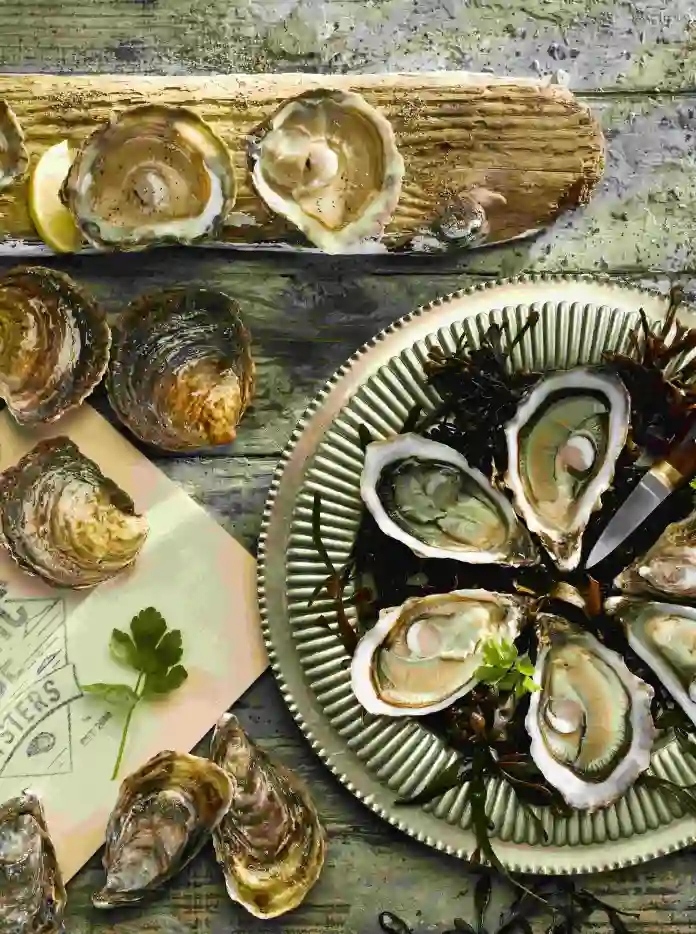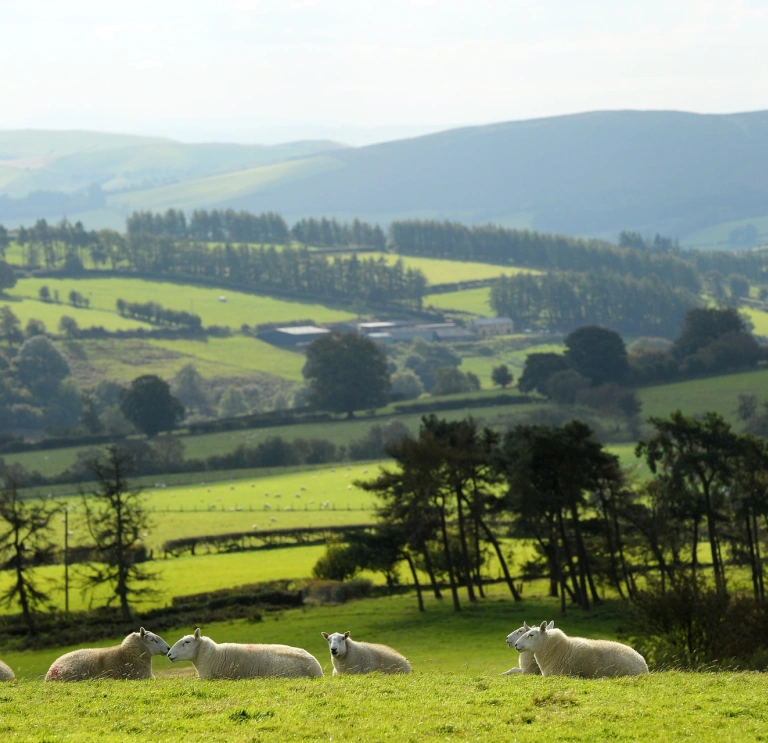Ask a Welsh person which food best encapsulates the taste of their country and you’re likely to receive an impressive array of answers.
For traditionalists, it’ll likely be roast lamb; veggies, on the other hand, might opt for Caerphilly cheese; while those with a more adventurous palate could make a case for the seaweed-based delicacy, laverbread.
In fact, Wales has 24 products with protected ‘geographical indication’ status, produce that has the distinctive flavour of Wales – whether on their own or as ingredients in some iconic Welsh dishes. This protection, which ensures the high quality of the produce is recognised and, in many instances, also helps to protect the traditional practices involved in creating them, is divided into three categories:
Protected Designation of Origin (PDO): indicates the product has been produced, processed and prepared in a specified region, which gives the food or drink its unique taste or distinctive quality.
Protected Geographical Indication (PGI): emphasises a link between a product and a specific geographical region, which benefits its quality or flavour. At least one of the stages of production, processing or preparation usually takes place in this region.
Traditional Specialties Guaranteed (TSG): focuses on protecting a traditional production method of a product. This usually has links with a certain area, but, unlike the other two classifications, is not tied specifically to one place.
Alongside Welsh Lamb (PGI), Welsh Beef (PGI) and Traditionally Reared Pedigree Welsh Pork (TSG), Wales has a smorgasbord of protected products that can be sampled in or outside of Wales. Here’s an overview of the other 21.
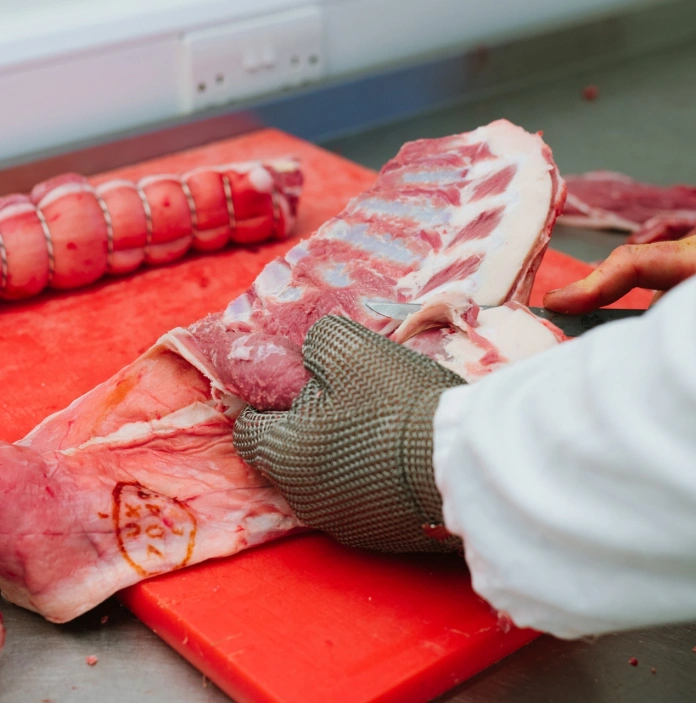
Carmarthen Ham (PGI)
Local legend in the town of Carmarthen claims that upon their conquest of Britain, the Romans stole the recipe for Carmarthen Ham, took it back to Italy, and created the now world-renowned Parma Ham. What we know for certain, however, is that Carmarthen’s namesake product dates back to a time when Welsh farmers would preserve their meat in salt to stop it spoiling during the long, cold winter months, and locals seemingly got a real taste for it! Today Carmarthen Ham is still cured in salt for six to nine months before being thinly sliced and served – a process that ensures the meat’s delicate flavours and tendency to melt in the mouth.
Where to try it: The Rees family have played a huge part in protecting and promoting Carmarthen Ham, based on family practices dating back to the 1800s. Their flagship store in the atmospheric Carmarthen Market has been in operation since the 1970s. Coincidentally (some might say, suspiciously), the market itself dates back to Roman times…
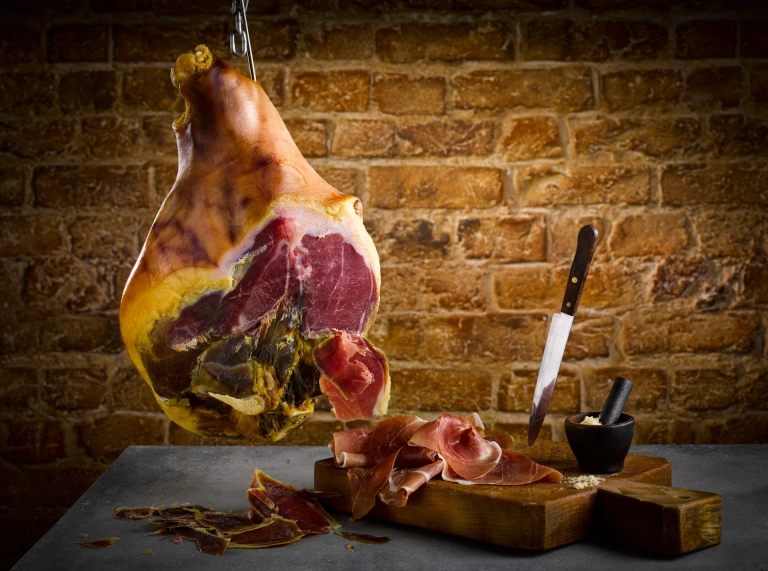
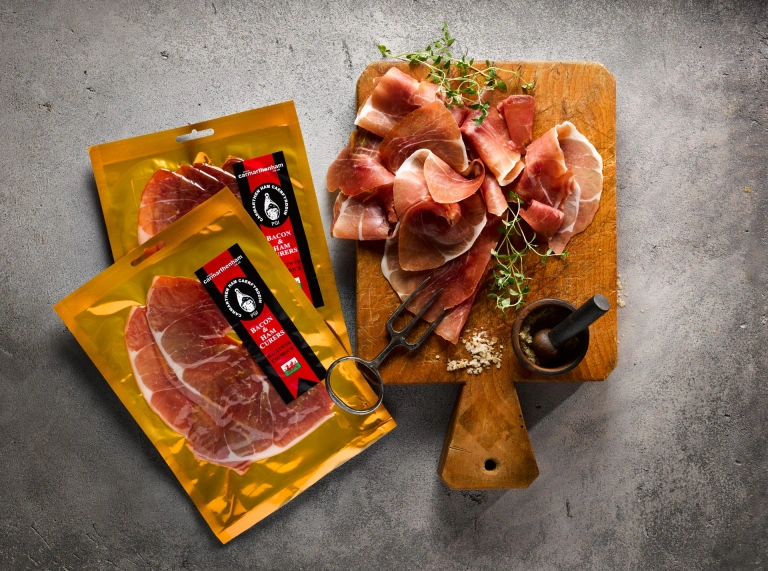
West Wales Coracle Caught Sewin (PGI) and Salmon (PGI)
Appearing like large baskets floating (somewhat unsteadily!) on the water’s surface, coracles (from the Welsh cwrwgl) have been used by fishermen in Wales since the 1800s. Along the Tywi, Taf and Teifi rivers in West Wales a handful of these one-man crafts can still be spotted during the fishing season, and the sewin (sea trout) and salmon caught by these practitioners – sustainably, using nets – are prized for their succulent flavour.
Where to try it: Fresh Coracle Caught Sewin and Salmon has graced the menus of famed venues across the UK, including the food hall in Harrods department store in London. But the fish is best sampled during the season (roughly April to August) at local restaurants set near the rivers, such as the Pryd O Fwyd in Ferryside.
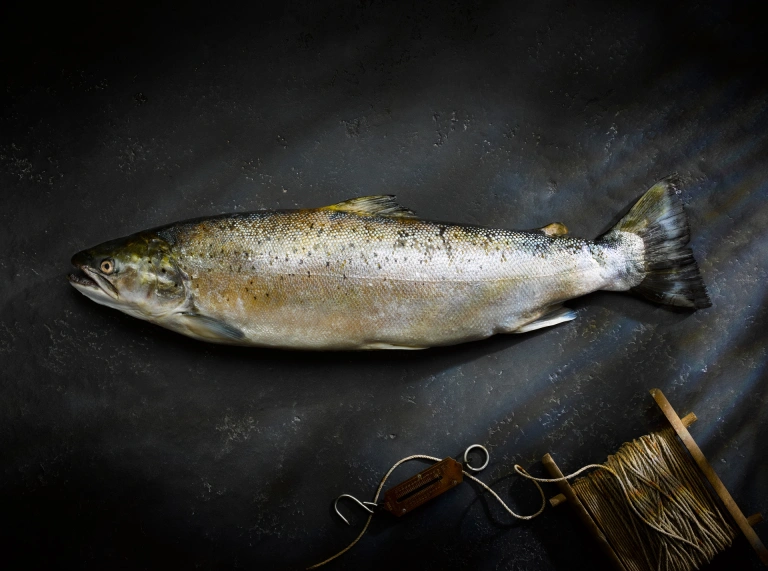

Gower Salt Marsh Lamb (PDO)
For lambs to officially be categorised as Gower Salt Marsh they have to have spent at least half of their lives grazing on the salt marshes of the northern Gower Peninsula. According to connoisseurs, it’s this unique environment that gives the lamb its distinctive mild, sweet and grassy flavour; a result of the naturally salty vegetation on which the lambs eat, and the vast area in which they are permitted to roam – both of which help in achieving the optimum balance of lean meat to fat.
Where to try it: You can find Gower Salt Marsh Lamb gracing restaurant menus across Gower, including The Britannia Inn in Llanmadoc and Beach House in Oxwich Bay, the latter of which is one of Wales’ Michelin-starred restaurants.
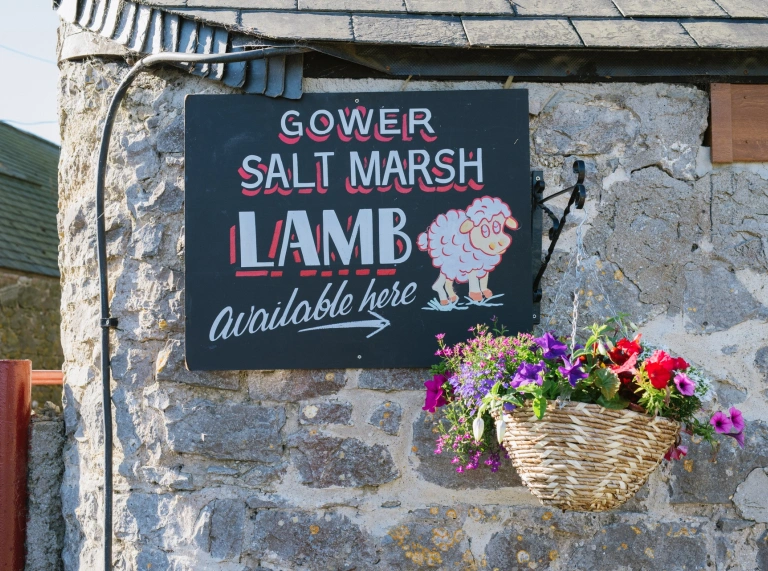
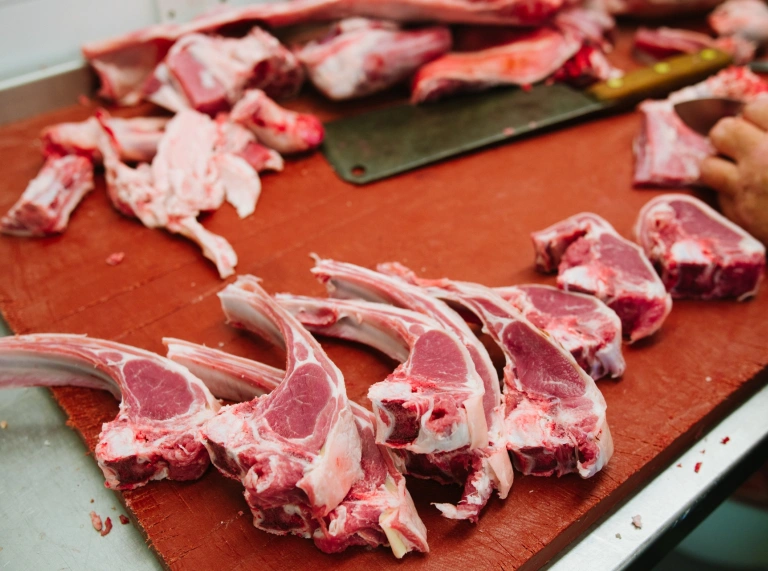
Traditional Welsh Cider (PGI)
Though often associated with the West Country of England, cider has a strong heritage in Wales, wangling its way into 14th-century Welsh poetry and even appearing in the very first Welsh dictionary (as seidry; meaning ‘drink made from apples’). Traditional cider is still produced in Wales much the same way it was then, made from the first press of apples grown in the country. Typically, it’s semi opaque in colour, with an alcohol strength between three and eight and a half per cent.
Where to try it: With around 50 cider producers in Wales, serious fans of the apple-based beverage can undertake the Welsh cider trail, with tasters on offer at farms like Apple County Cider Co near Skenfrith in Monmouthshire.
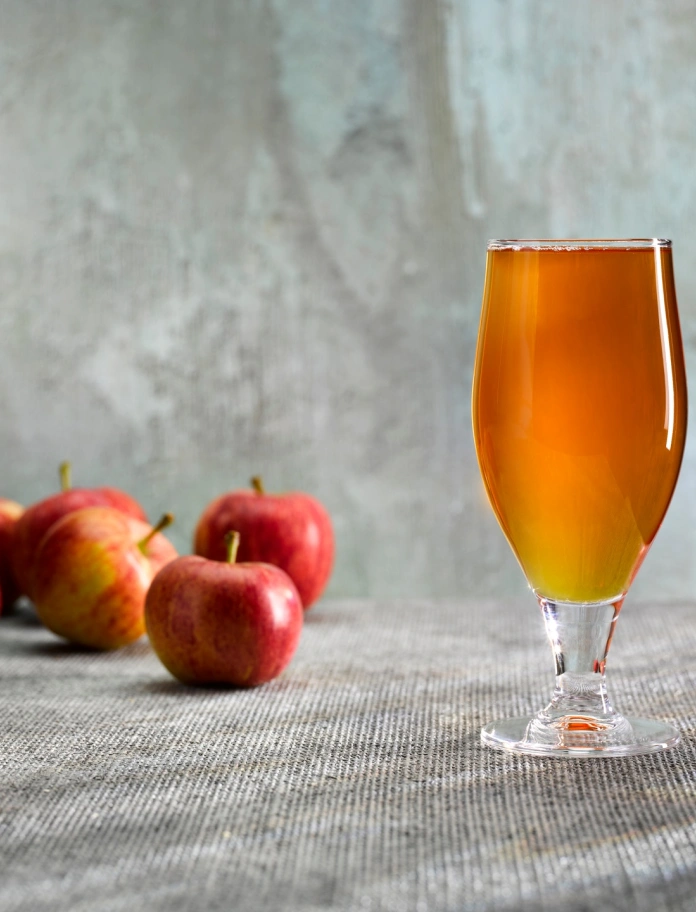
Traditional Welsh Caerphilly (PGI)
If you think you’ve tried Caerphilly cheese, think again. The mass-produced version, typically made in southern England and sold in supermarkets throughout the UK, pales in comparison to the original, which, it’s thought, was originally made by farmers to sustain miners in the town of Caerphilly. Considered Wales’ only native cheese, it’s hard and creamy, made from milk from grass-fed Welsh cows and has a slight lemony taste.
Where to try it: Located between Cardigan and Lampeter in West Wales, Caws Teifi Cheese is the most decorated artisan cheesemaker in Britain. The company’s quaint on-site farm shop stocks a traditional Welsh Caerphilly, as well as an oak-smoked variety (also available to buy via the website).
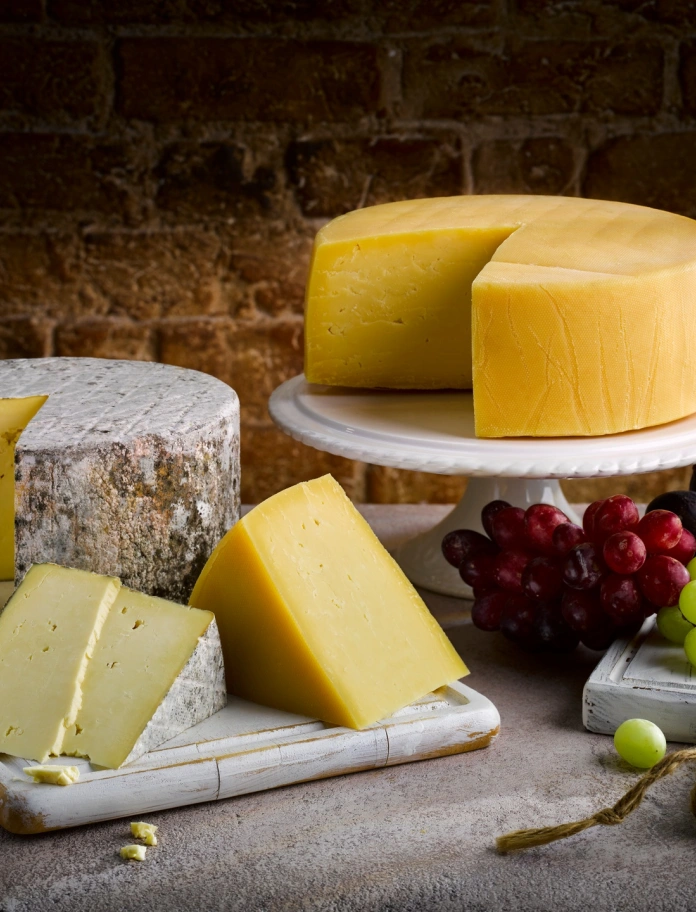
Welsh Regional wine (PGI) and Welsh wine (PDO)
After a slightly turbulent start (including a failed attempt to grow Gamay Noir at Castell Coch in the late 19th century), wine growing finally took root in Wales at the dawn of the 21st century, and has continued to blossom ever since. Both red and white grape varieties are grown, producing wines known for their crisp acidity and aromatic flavours, which, it’s said, is down to the country’s long growing season and favourably temperate climate.
Where to try it: Wales is home to over 30 vineyards, each of which specialises in its own distinctive blend. If red is your thing, White Castle Vineyard, in Abergavenny, produces an award-winning pinot noir, while Gwinllan Conwy, south of Llandudno, has scooped accolades for both its still and sparkling white wine. Both offer tours and tastings.


Welsh Laverbread (PDO)
We’re well aware it might not be the best-looking Welsh delicacy, but laverbread, which is, in essence, boiled seaweed, has won a special place in the heart of local people – so much so that Welsh actor Richard Burton famously titled the dish, ‘Welshman’s Caviar’. Plucked from the beaches of Wales and boiled into a black gelatinous paste, laverbread’s nutritional value made it a morning staple for Welsh miners (it was even doctor prescribed!), and it’s still the star ingredient of a traditional Welsh breakfast today.
Where to try it: Swansea (Abertawe) is where laverbread traditionally came to be sold after being collected from the beaches of Pembrokeshire, and the product still takes pride of place on the stalls of Swansea Market today. For those who want to dig right in: nearby Gershwins Coffee House is one of a handful of Swansea establishments that includes a generous dollop of laverbread as part of their set breakfasts.

The Vale of Clwyd Denbigh Plum (PDO)
The only plum variety native to Wales, the Denbigh Plum has been a headline act at horticultural shows since the mid-19th century, and continues to win new admirers thanks to its depth of flavour and natural sweetness. So important are these characteristics that growers go to great lengths to ensure the plum’s lineage, with new Denbigh Plum trees only qualifying as such if they are cloned from existing Denbigh Plum trees (not grown from seed, where uncontrolled pollination can occur!). If that wasn’t enough, the plums themselves must also come from trees grown in the Vale of Clwyd, which is home to some of the most fertile soils in the UK.
Where to try it: To sample Denbigh Plum desserts, jams and even vodkas, head to the annual Denbigh Plum Feast food festival, which sees around 100 food stalls take over Denbigh’s Town Hall each October. At other times of year, restaurants around the town feature the fabled fruit on their menus.
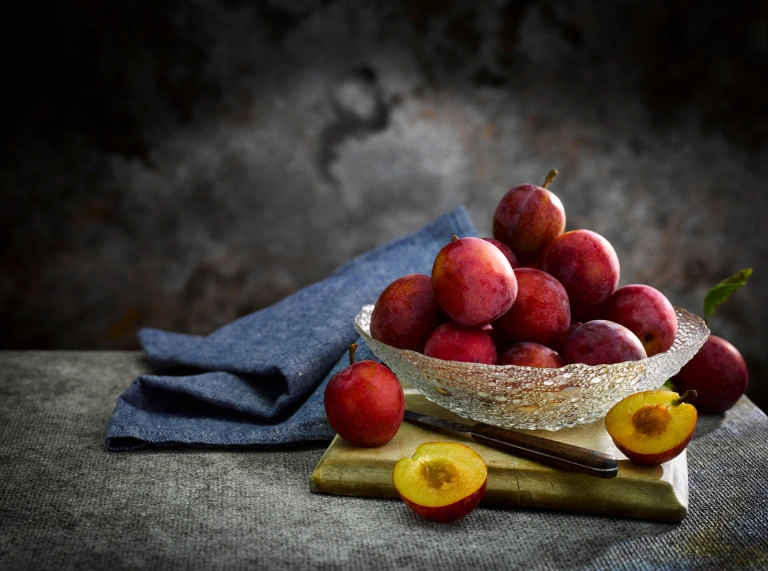
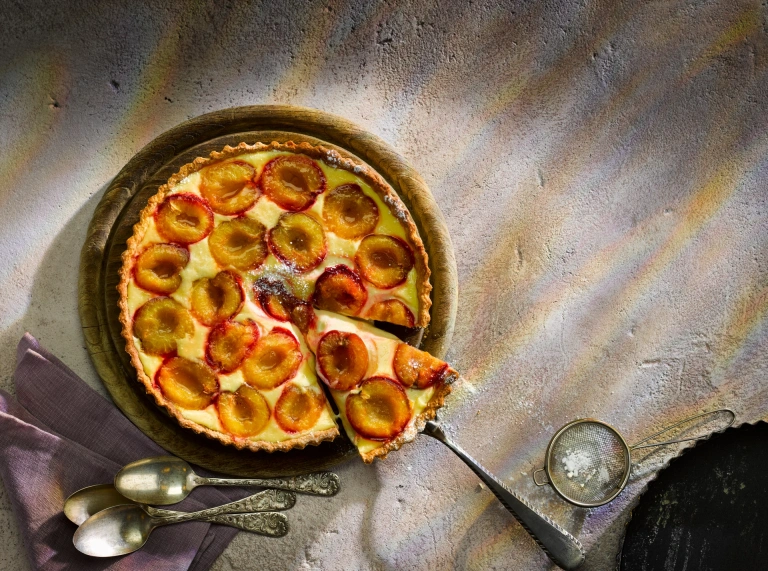
Pembrokeshire Earlies (PGI)
It’s the unique geography of the Welsh county of Pembrokeshire, surrounded by the sea on three sides, that allows Pembrokeshire Earlies to be grown, well… early. The sea, warmed by the Atlantic Gulf Stream, keeps this rocky segment of Wales nice and toasty, staving off frost and aiding growing conditions in the region's already rich red sandstone soil. Having been harvested (often by hand) at a young age, Pembrokeshire Earlies are beloved for their soft skin and strong earthy, nutty flavour.
Where to try it: During the season (roughly May to August), you’ll find Pembrokeshire Earlies featuring on the menus of fine-dining restaurants and local pubs alike around Pembrokeshire, including Jabajak, a classy dinner spot set within a large vineyard near Whitland.
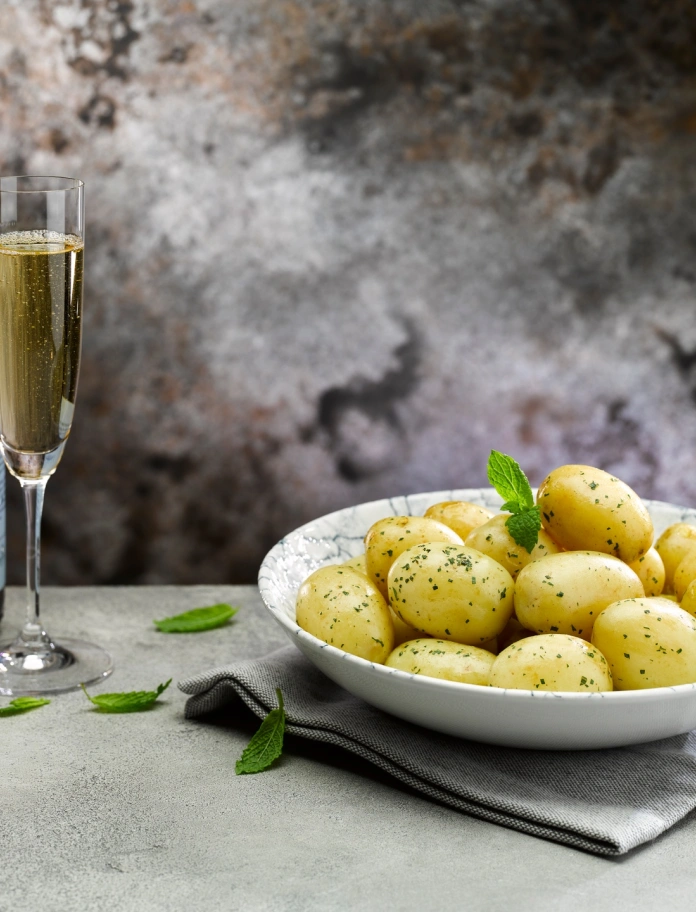
Traditional Welsh Perry (PGI)
Though it’s believed perry has been brewed on Welsh farms since the 17th century, by the 1970s, production of this sweet, pear-based alcoholic beverage had almost completely dried up in Wales. Thankfully, just like cider, perry has enjoyed a renaissance in the last few decades and there are now 20 perry makers in the country. To qualify as Traditional Welsh perry, only the juice from pears grown in Wales can be used, varieties of which are blended together to give the drink a taste that’s either crisp and dry or sweet and fruity.
Where to try it: For a sample of the very best in Traditional Welsh Perry, look no further than the Welsh Perry and Cider Festival, held in Caldicot Castle each June, where prizes are awarded for the year’s best perry. Alternatively, the Ross on Wye Cider & Perry Company offer tours and tastings throughout the year.
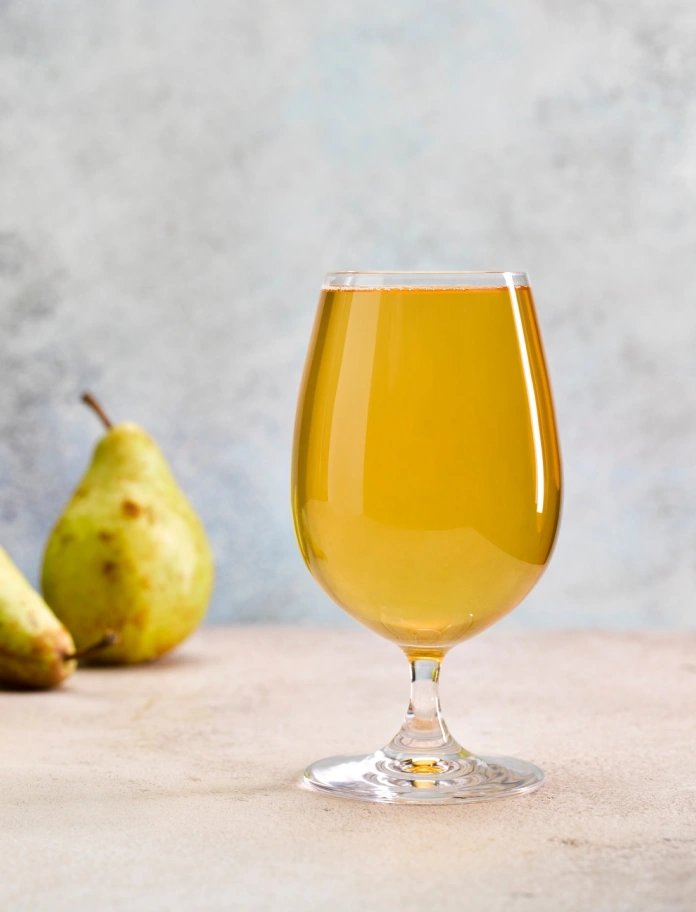
Cambrian Mountains Lamb (PGI)
There’s a feel of old worldliness in the Cambrian Mountains, a vast, green oasis in Mid Wales with few human settlements or even roads running through it. Unsurprisingly, this sense of archaism is reflected in the farming practices that take place here, which have remained largely unchanged since the Middle Ages. But it is these traditional, inherently sustainable, practices that is said to give Cambrian Mountain Lamb its prized flavour, with the lambs allowed to develop slowly and naturally in this vegetation-rich environment, ultimately resulting in a meat that’s tender and succulent, and highly sought-after.
Where to try it: As a prized cut of meat with a relatively short season (September to December), Cambrian Mountains Lamb can be one of the trickier Welsh delicacies to get your teeth into. Your best bet is trying local butcher shops in towns surrounding the Cambrian Mountains region, such as pretty Llanidloes. However, during the season, you can stumble on the delicacy in supermarkets all over Wales.

Anglesey Sea Salt (Halen Môn) (PDO)
It’s only salt, right? Wrong. Anglesey Sea Salt (Halen Môn) is salt fit for kings, quite literally: the condiment has graced the tables of many a royal occasion, as well as international events (such as the London Olympic Games) and political summits (Barack Obama is apparently a fan!). Salt has been produced on the Isle of Anglesey, off Wales’ northern coast, since Roman times, and the Halen Môn company has been creating their renowned product since 1997. Pure, mineral-rich seawater is drawn from the fast-flowing Menai Strait into a processing plant, where it is raked by hand into crunchy white flakes. These boast a clean taste, and lack the bitterness associated with excess calcium.
Where to try it: Halen Môn is used in some of the world’s most acclaimed restaurants, including Heston Blumenthal's three-Michelin-starred The Fat Duck. However, there is no better place to sample Anglesey Sea Salt than Swains in Menai Bridge, Anglesey. The local butcher shop was the first place to stock the salt and still sells it today.
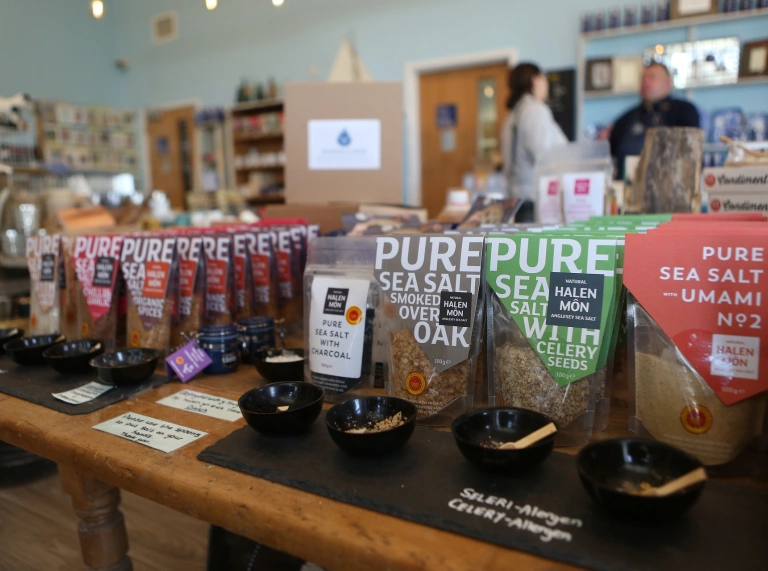
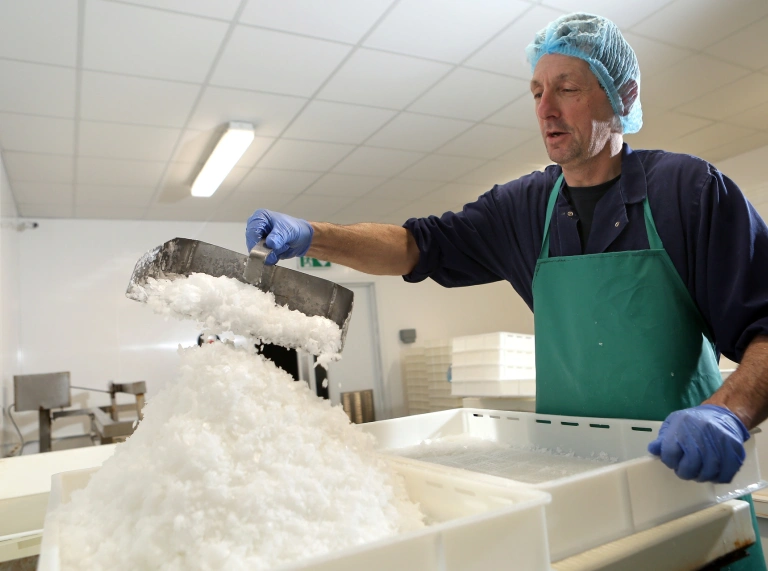
Conwy Mussels (PDO)
Rise early in the town of Conwy and you might spy a gang of burly men strolling through the streets with large rakes in tow. But these guys aren’t clearing leaves from the pavements, they’re actually fishermen. The mussels in the Conwy estuary are still sourced by rake, a tough-to-master, age-old practice that continues due to its sustainable credentials – raking helps to keep stocks of the shellfish high by allowing smaller mussels to fall through the gaps. The deep waters of the estuary are perfect for mussel growth, with a mix of sea and river water that is high in nutrients, leading to the creation of large mussels known for their rich, salty taste.
Where to try it: During the season (roughly September to February) sample Conwy Mussels fresh from the source by heading to the on-site shop at Conwy Mussels Co, located on the town’s harbour. The mussels are caught that day, but once they’re gone, they’re gone; so arrive early to avoid disappointment. Alternatively, many Conwy venues have mussels as specials during the winter months, including The Castle Hotel.
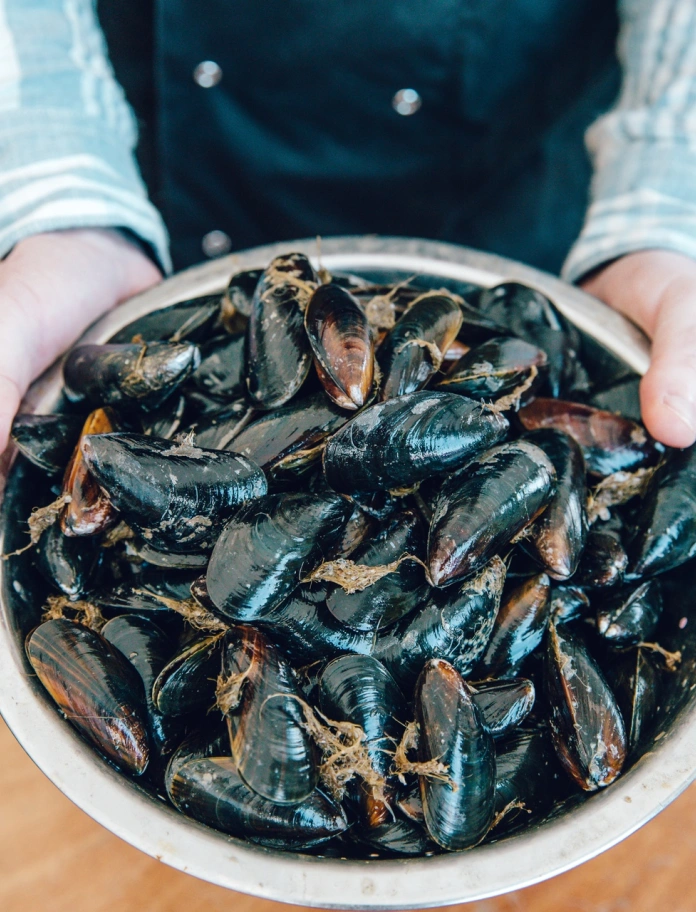
Welsh Leeks (PGI)
The humble leek has long been considered a symbol of Wales. The association is said to stem from a 7th-century battle, where a Welsh king, Cadwaladr, ordered his men to strap a leek to their armour to easily distinguish friend from foe on the battlefield. It’s for this reason you’ll still see leeks pinned to clothing on the feast day of our patron saint, Saint David’s Day. Though we wear them once a year, we eat the tasty root vegetable far more frequently, with the protected Welsh-grown variety championed for its peppery taste, along with its earthy aroma and vivid green colour. It’s these traits that make them an ideal addition in our national soup, cawl – or perfect for pairing with a smart jacket.
Where to try it: You can find Welsh Leeks starring in restaurant dishes across the country, but for bonus patriotism points, try them in a classic Welsh cawl. The cafe at the Norwegian Church Arts Centre in Cardiff Bay, where author Roald Dahl was baptised, serves up a particularly scrumptious version.
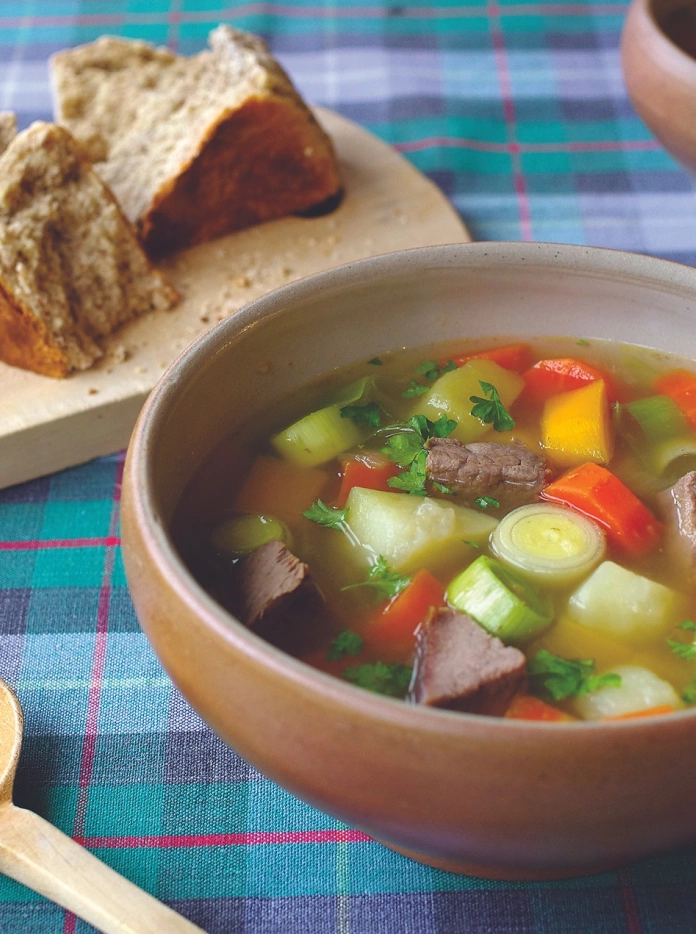
Single Malt Welsh Whisky (PGI)
Wales has an impressive pedigree of whisky production that dates back to the Middle Ages (it’s even claimed that a Welshman, Evan Williams, had a hand in popularising bourbon in America!), but that all came to a grinding halt in the early 20th century, when the last whisky distillery in Wales shut down production. Incredibly, it was nearly a century before another whisky distillery would operate in the country, with Penderyn, situated in the Welsh village of the same name, releasing its first single malt on St David's Day 2004, leading the way for numerous others, such as Dà Mhìle and In the Welsh Wind, to follow suit. Unique distillation methods, the moderate Welsh climate and the purity of Welsh water all contribute to giving Welsh whisky its smooth, light taste, with the product now enjoyed by drinkers in over 50 countries around the world.
Where to try it: Penderyn fuelled the whisky renaissance in Wales and there are few finer spots to sample a dram than at its original distillery in the village of Penderyn, set amidst the bucolic landscape of the Bannau Brycheiniog (Brecon Beacons) National Park. A number of other distilleries also offer tours and tastings, including Aberfalls Distillery in Gwynedd and In the Welsh Wind’s distillery in Cardigan.
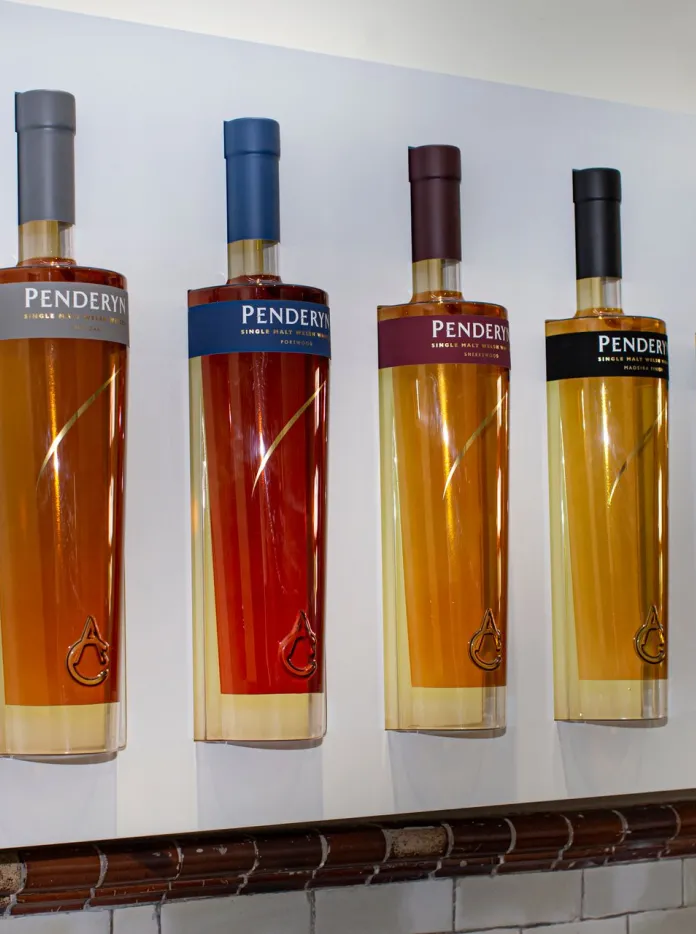
Welsh Heather Honey (PGI)
The North Wales town of Conwy has hosted The Conwy Honey Fair for over 700 years, supposedly making it one of the oldest food festivals in Britain still running today. Given this long association with the sweet golden substance, it feels fitting that the first British honey to win protected PGI status is a Welsh one. Welsh Heather Honey is collected from Welsh bee hives and infused with pollen from Welsh heather moorlands. It’s this purple heather that gives the honey its aromatic scent, while an unadulterated approach to collecting the honey, including the use of only minimal filtration, ensures the natural goodness is retained. The resulting product is a rich, thick honey with an intense sweetness that is delicious when slathered over toast or stirred into tea.
Where to try it: Reports exist of “large quantities” of “very excellent” heather honey lining the stalls at The Conwy Honey Fair as far back as 1835, and the event, held annually in September, still serves as a perfect place to get your hands on some – while enjoying a selection of tasting samples of course. Alternatively, visitors can find the sugary delicacy at farm shops around Wales, including Afon Mêl Honey Farm (which runs an on-site cafe during summer) in Ceredigion and The Bee Shop in the town of Monmouth.
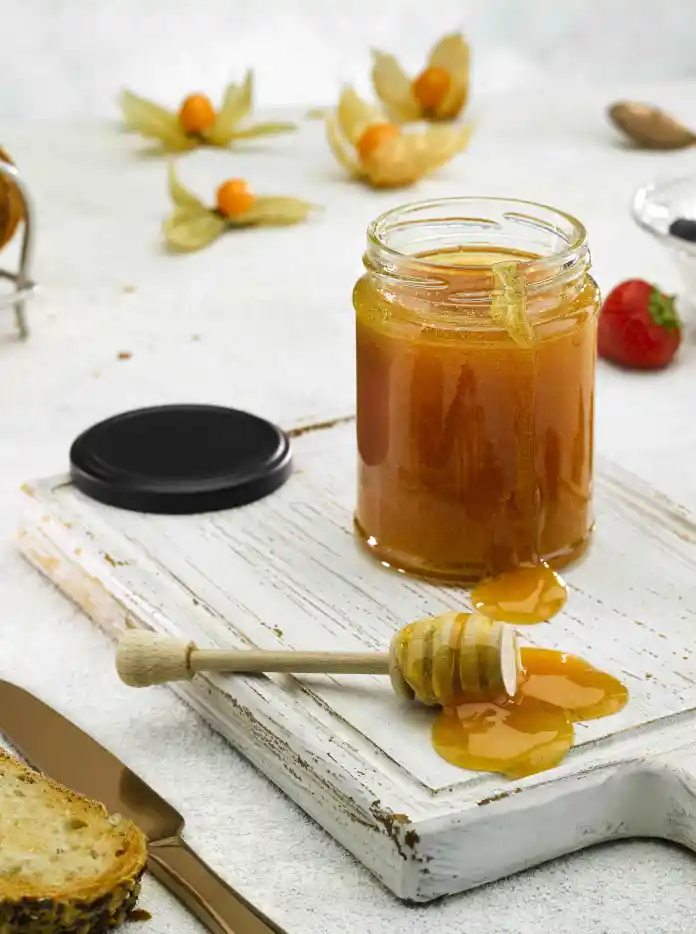
Dovey Native Botanical Gin (GI)
The UK is said to have gone a little gaga for gin during the so-called “gin craze” of the 18th century, but it’s only been in more recent years that the Welsh have really developed a hankering for the juniper-based spirit, with over 20 distilleries opening in Wales in the last decade or so. One of the key figures of the Welsh gin renaissance has been Dovey Native Botanical Gin, now the first UK gin to be awarded protections under the GI scheme. Produced in the Dyfi UNESCO World Biosphere Reserve in Mid Wales, each bottle of the gin is infused with at least 18 botanicals, all of which are foraged from within the reserve. This gives the spirit a complex blend of flavours that is reflective of the naturally diverse landscape where it’s lovingly crafted.
Where to try it: Well-heeled diners might happen across a bottle of Dovey Native Botanical Gin on the menus of some of the UK’s Michelin-starred restaurants, but for those with less lavish lifestyles, a perfect place to try a drop is at the Dyfi Distillery itself. Situated in the tranquil village of Corris, the distillery is open to guests throughout summer, where staff are always happy to talk about the work that goes into creating their one-of-a-kind tipple, inspired by the magnificent surrounding landscape.

Pembrokeshire Native Oysters (PGI) and Rock Oysters (PGI)
Just like seaweed, oysters have been foraged by locals in Wales’ coastal communities since medieval times, and later formed a cornerstone of the West Wales fishing industry in the 19th century, when 9 million Welsh oysters were said to have been exported annually around the UK and beyond. These days, oyster farmers in Pembrokeshire take a far more sustainable approach to their practice, growing batches of oysters in specialised netted-platforms in the Daugleddau Estuary, where the mineral-rich Atlantic Ocean mixes with the nutrient-filled river water that's rolled down from the Preseli Mountains. It’s this combination of factors that gives the oysters their clean, sweet, and sometimes slightly citrusy, flavour. Though grown in the same estuary, both Pembrokeshire Native Oysters and Pembrokeshire Rock Oysters have their own PGI status. The former are rarer, with a round, flat shape, while rock oysters have a teardrop-shaped shell – both, however, will leave an equally strong impression on diners with a soft spot for shellfish.
Where to try them: For those heading to Pembrokeshire hoping to sample the regional speciality: the world is their oyster – the delicacy lines the menu of a dozen or so seafood restaurants in the region including Madtom Seafood Cafe Bar in Narberth and The Stone Crab in Saundersfoot. However, The Griffin, in the village of Dale, which overlooks the estuary where the oysters are grown, is a particularly serene spot to slurp down a couple of the prized molluscs.
